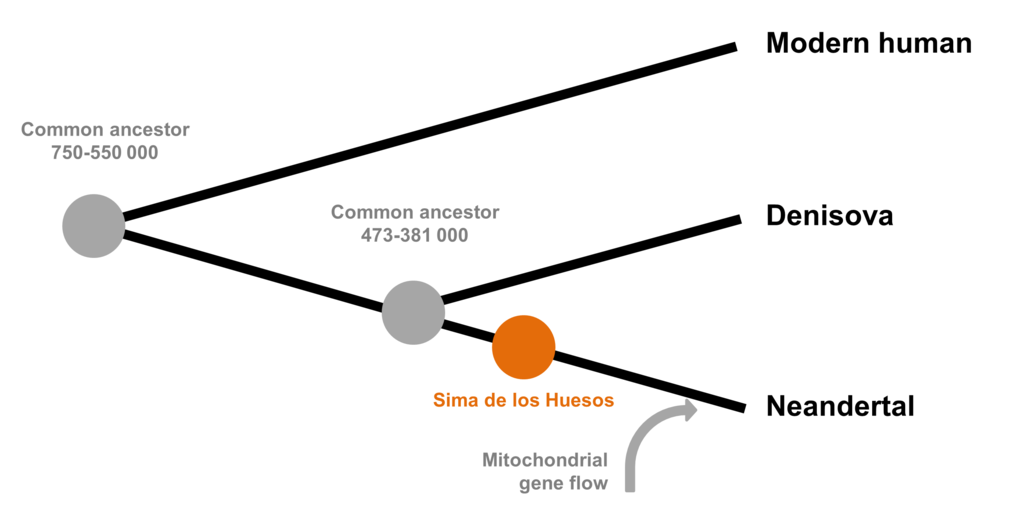



Nine human species went extinct 300,000 years ago. Homo Sapiens tried to triumph in a fierce battle for survival. Neanderthals adapted to Europe's cold weather. Denisovans lived in Asia. Homo Erectus and Homo Floresiensis lived in Indonesia. Homo Rhodesiensis lived in Central Africa. Homo Naledi lived in South Africa. Homo Luzonensis inhabited the Philipines. Red Deer Cave people lived in China. But just 10,000 years ago all other than Homo Sapiens were gone. It resembles mass extinction though there was no trace of environmental disaster. Scientists have now concluded that extinction took place due to spread of Homo Sapiens. In Southern Africa between 260,000 and 350,000 years ago Homo Sapiens evolved as a species. Spread of Homo Sapiens from Africa started Sixth Mass Extinction and other human species died because of it. Homo Sapiens hunted wooly mammoth to extinction. They destroyed forests for farming and altered climate.
Other human species failed to compete with them for land and resources. Cooperative violence among male chimps suggests that war predates evolution of humans. Archeology shows that war in primitive cultures was intense and lethal. Homo Sapiens built neolithic weapons such as clubs spears and axes which were very lethal when combined with guerilla tactics. Cave paintings and music instruments show that Homo Sapiens even developed mental tools for war. Homo Sapiens can cooperate, manipulate and deceive.
DNA shows that Homo Sapiens have mated with other now extinct human species. East Asian, Polynesian, Australian population have DNA from Denisovan. Homo Erectus DNA found in Asian people. African genomes show DNA of other archaic species. So these human species got erased after encountering Homo Sapiens. Evidence shows Homo Sapiens and Neanderthals were at war for 100,000 years. Humanity split into two groups around 600,000 years ago. One group stayed in Africa evolving as Homo Sapiens, other group moved to Asia and then Europe and became Neanderthals.
Break to the lower arm are considered sign of war. Trauma and deaths especially common among Neanderthal males. For around 100,000 years Neanderthals resisted Homo Sapiens and forced them inside Africa. Neanderthals had an aggressive military strategy. Homo Sapiens lost to Neanderthals for thousands of years. When a species start growing in population, fight for hunt and land start within the species. Fight for women among men becomes common too. Male chimps gang up to kill male chimps from rival gangs. This proved cooperative aggression evolved 7 million years ago in the common ancestor of chimps and Homo Sapiens and other human species like Neanderthals. Neanderthals had 99.7% of Homo Sapiens DNA, they made fire, buried their dead bodies, made jewelry from sea shells and made art work.
By the 1920s, discoveries made at a number of European archaeological sites had prompted a consensus about the Paleolithic Period, which is now dated from 12,000 to nearly 2.6 million years ago. Archaeologists divided this period into Lower (oldest), Middle, and Upper (youngest) Paleolithic phases. Distinctive stone-tool assemblages—or “industries”—characterized each phase. Archaeologists identified these industries by the presence of diagnostic artifact types, such as Acheulian hand axes (Lower Paleolithic), Mousterian scrapers made on Levallois flakes (Middle Paleolithic), and Aurignacian prismatic blades and carved antler points (Upper Paleolithic). The fact that tools from more recent industries were lighter, smaller and more heavily modified suggested there was a trend toward greater technological and cultural sophistication in the Paleolithic sequence. European Upper Paleolithic industries were associated exclusively with Homo sapiens fossils and Lower and Middle Paleolithic industries were associated with earlier hominins (Homo heidelbergensis and Homo neanderthalensis). This supported the idea that there were important evolutionary differences between modern Homo sapiens and earlier archaic hominins.
Author: Saikat Bhattacharya